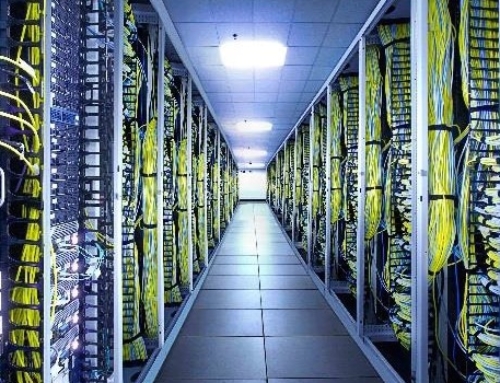The COVID-19 outbreak has catalyzed operational changes for data centres, as it has across almost every industry. Keeping on-site IT support to a minimum is now a greater priority, as physical distancing continues to be required. That leaves data centres more reliant on remote management and monitoring of IT infrastructure while seeking ways to automate more critical processes in both centralized and edge applications. Even as authorities in some areas begin to loosen restrictions and economies navigate the uncertainty of reopening amid additional waves of infection, the need for remote working conditions is not likely to change any time soon.
In this article, we’ll explore the advantages of remote power monitoring in the COVID-19 era and offer considerations for data centres that anticipate greater need for remote monitoring as they adjust to the new normal.
Changing Dynamics
While the current pandemic might accelerate the adoption of edge infrastructure, demands were already increasing as many data centres began to move beyond the traditional centralized IT framework. This transition toward edge infrastructure has created an environment where a considerable amount of infrastructure must operate without dedicated, on-site support staff. As a result, capabilities for identifying potential issues and providing maintenance have also advanced to ensure these systems can continue running. According to analysis from Gartner, in this new IT world, infrastructure needs to become relevant as a “support vehicle rather than a control point for services delivered.” The role of IT should shift to deliver the right service, at the right pace, from the right provider, at the right price – essentially becoming a broker and manager of services.
The decision to embrace a digital model is easy, but implementation requires careful considerations. As data centre and IT managers begin to think about what their power management infrastructure will look like in the COVID-19 era, several factors are worth keeping in mind. Below are some key considerations for remote power monitoring services as they become more essential in this dynamic environment.
- Proactively mitigate risks with real-time data: Data centres may have a lot of information at their disposal, but that doesn’t necessarily mean all the data at their disposal is actionable. Some of it may be historical data that yields good insight into product history but may not alert the user to more pressing issues. Advanced remote monitoring services offer IT staff the ability to go beyond manual and/or reactive strategies with real-time access to system data. A real-time remote monitoring service can help data centres mitigate downtime risks associated with power equipment components and proactively replace them before they fail, extending the life of investments and addressing potential problems before they happen. For businesses operating multiple data centres or edge locations, real-time remote monitoring tools offer a central hub to help gain visibility and control over their entire infrastructure. Technicians can use these solutions to address issues efficiently and maintain business continuity across the network despite having skeleton on-site crews or facing potential travel restrictions.
- Easily accessible insights that enable quick decision making: Power monitoring software and services continue to evolve in their ability to offer easily digestible, at-a-glance reports that provide insights into product history as well as highlight potential upcoming issues. This can be achieved via dashboards that deliver important insights into system status, as well as easy access to device-level details. Insights on real-time data, trends, events, service history, and alarms should be easily accessible from a mobile or tablet device, along with the ability to quickly communicate how devices or locations are performing. Having this granular level of detail makes potential power issues significantly easier to inspect, report on, and remediate while aiding decision making. For example, when administrators can track data like battery date codes and service history, they can better plan for future maintenance needs.
- Predictive capabilities for proactive power monitoring: With the emergence of predictive analytics, power monitoring is beginning to move from a reactive to a more proactive model. Predictive capabilities allow data centres to better anticipate component failures in power equipment – days or even weeks before they occur – to help avoid downtime. This is an important benefit for data centres due to the high costs related to unplanned downtime. It also helps reduce the need to send technicians on site unless absolutely necessary, which enhances safety by lessening the need for data centre staff to interact with outside personnel. As development of predictive technology continues, diagnostic data, capture and analytics, workflows, and domain expertise will continue to become more advanced, providing a scalable platform for maintenance and repair processes in the future.
- SaaS vs. on-premises investments: There is an opportunity to shift capital expenses to operating expenses and leverage pay-as-you-go models by subscribing to software-as-a-service (SaaS) platforms. This approach eliminates the costs and efforts associated with licensing, installing and wiring on-premises monitoring infrastructure or engaging third parties to do so in favor of self-serve installation with online support.
With the right remote power monitoring service, data centre and IT managers can move forward feeling more secure even in the midst of uncertain times. The demand for these types of systems will only grow as data centre networks continue to evolve and become more interconnected, while more emphasis is placed on the underpinning power infrastructure to support IT system advancement and keep operations running smoothly. In any scenario, having the right monitoring capabilities positioned as part of an integrated power management system can help deliver uptime and provide greater security to mission-critical infrastructure.
- Article Source: DataCenterKnowledge.com






